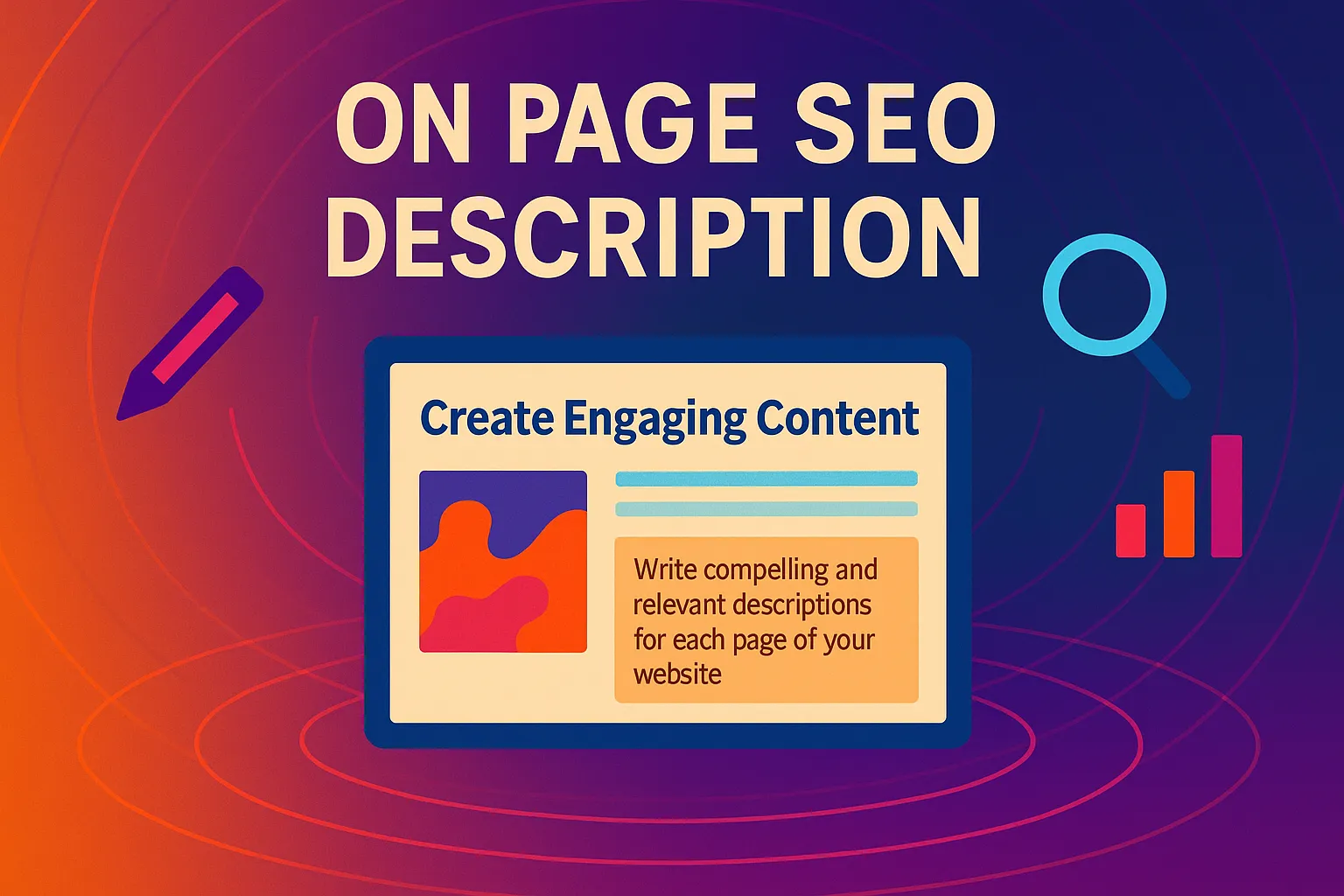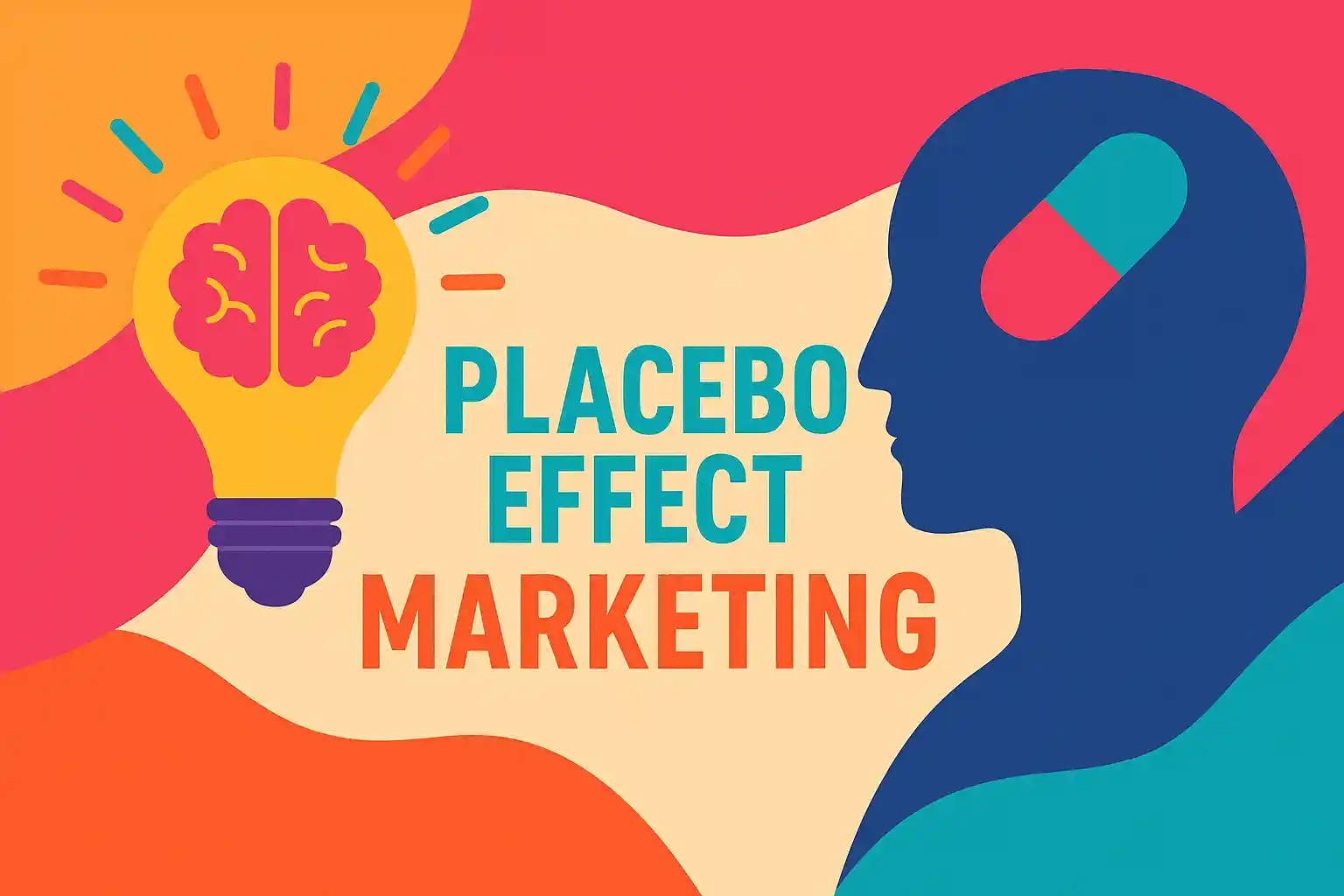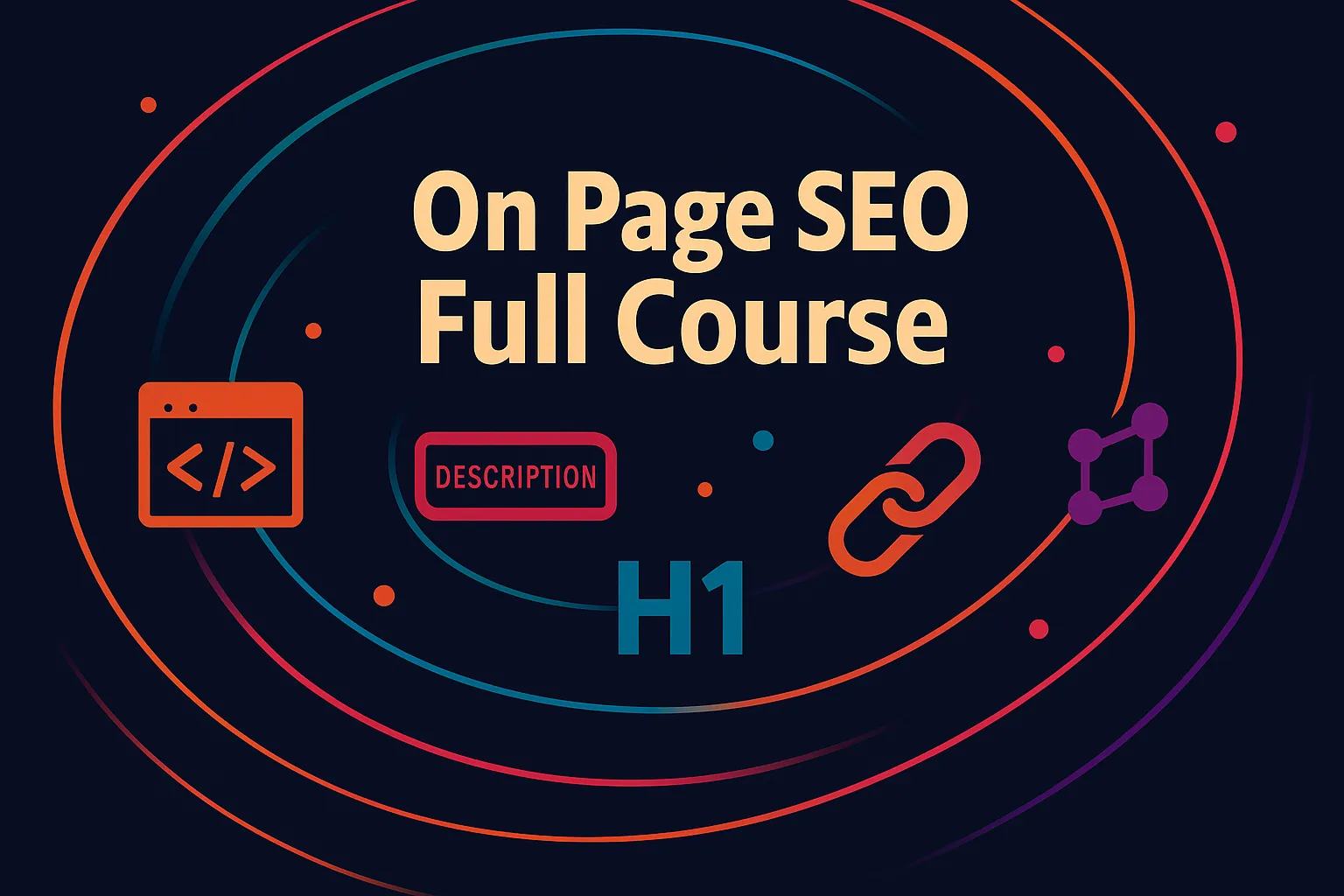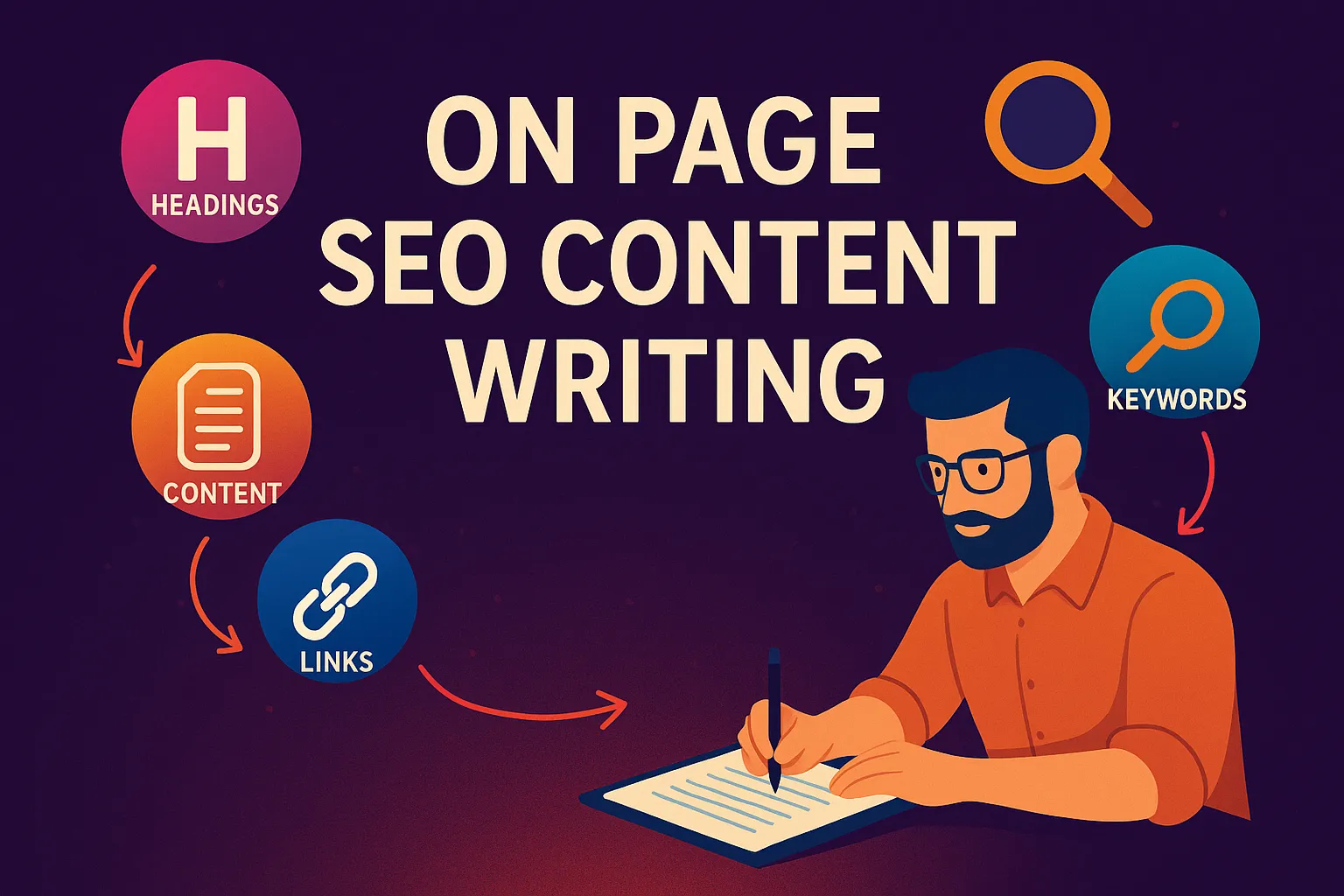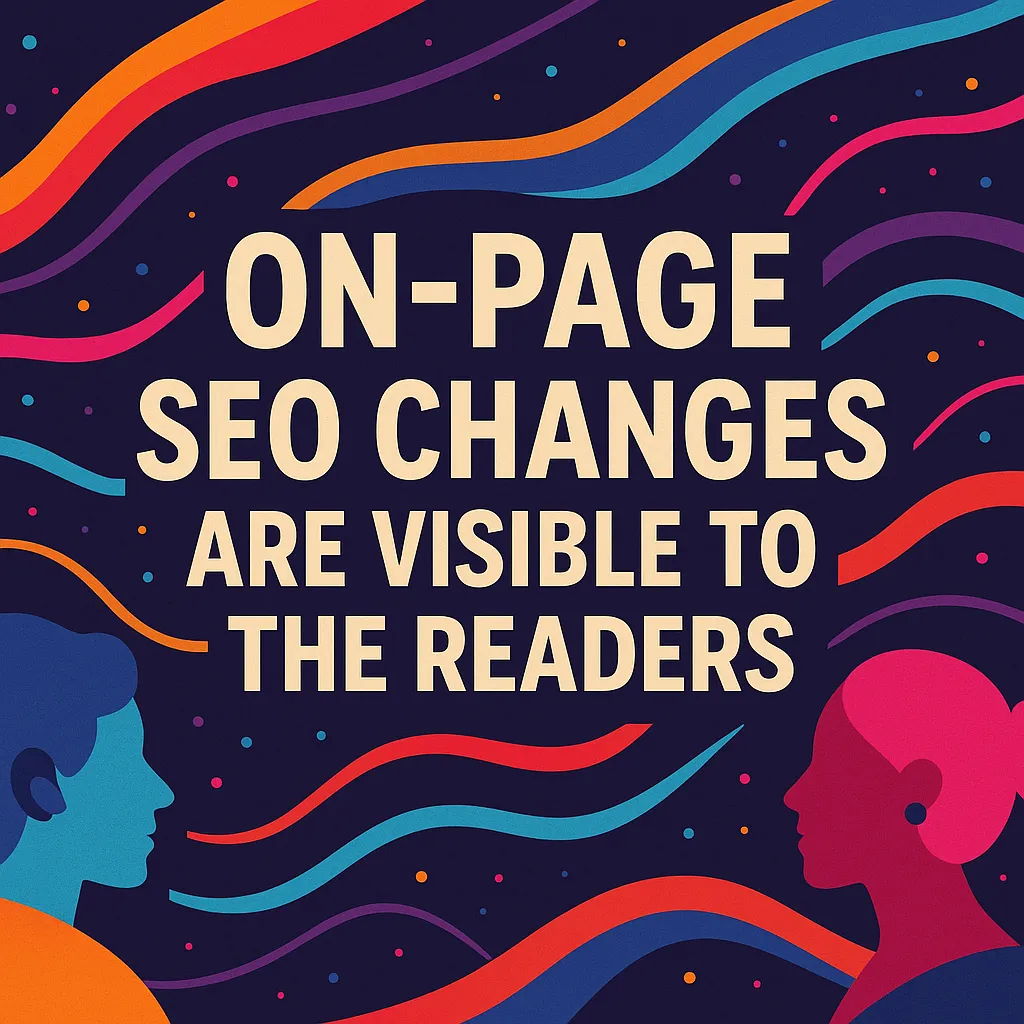What Is an On Page SEO Description?
An on page SEO description is more commonly known as a meta description. It’s the short snippet of text you see underneath a webpage title in Google search results.
While it doesn’t directly influence search rankings, it absolutely influences whether someone clicks on your link or scrolls right past it. It’s your one-line elevator pitch to convince someone that your page is worth their time.
At Vibe Branding, we’ve optimized thousands of these over the last decade and can confidently say: if you’re ignoring your on page SEO description, you’re leaving traffic on the table.
TL;DR: What You’ll Learn in This Post
- What an on page SEO description is and why it’s essential for every page on your website
- How a strong description can increase your CTR (click-through rate) and improve SEO performance
- Google’s best practices for writing meta descriptions in 2025 and beyond
- The common mistakes people make when writing descriptions (and how to avoid them)
- Our top tools, strategies, and even AI suggestions we use at Vibe Branding to write high-performing SEO content
Why It Matters More Than Ever in 2025
When we started Vibe Branding ten years ago, search algorithms were already smart. But in 2025, they’re brilliant.
They read context, gauge user intent, and evaluate how well your content performs for actual human readers. That means the on page SEO description is no longer just filler text.
It needs to earn its place. It should speak directly to your audience, reflect your content accurately, and entice them to click.
If you’re writing descriptions just to include keywords, you’re missing the point. CTR is one of the most important engagement metrics Google watches, and that little summary line is your best shot at improving it.
In fact, according to Semrush, pages with well-written meta descriptions see up to 5.8% higher click-through rates than those without. We’ve seen this firsthand with our clients’ pages.
One of our clients in e-commerce improved monthly traffic by 24% just by rewriting product page descriptions with better hooks, better formatting, and clearer intent.
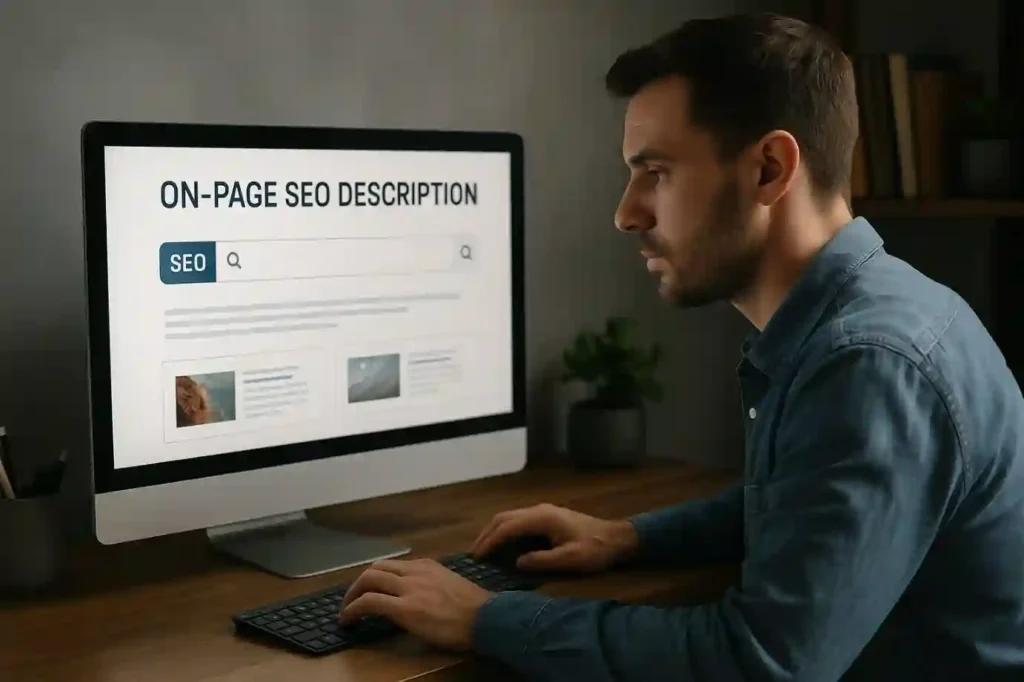
How a Well-Written Description Impacts CTR and Visibility
Google bolds words in your on page SEO description that match the user’s search query. So if someone searches “best dog toys for small breeds,” and your description includes those exact or closely related terms, it visually stands out.
That little detail can drastically increase CTR. But it’s not just about including the keyword—it’s about using it in a natural, persuasive way.
The best meta descriptions speak to the problem your user is trying to solve. Imagine this: you run a local yoga studio.
A page that says, “Yoga classes for all levels. Sign up for your free first session today” will get more clicks than “Home – Sun Studio.” One is informative and encouraging; the other says nothing of value.
At Vibe Branding, we work with clients to find the balance of keyword relevance, voice, and real-world appeal. Our approach is to optimize for human curiosity first—Google rewards that in the long run.
We often test descriptions for our clients using A/B tools or by reviewing CTRs in Google Search Console. A page with the same ranking can have drastically different performance just because of how compelling the description is.
Google’s Best Practices for Writing Meta Descriptions in 2025
Over the years, we’ve closely followed Google’s guidelines. Here’s what we know still works in 2025:
- Keep your meta description under 155 characters to ensure it displays fully on both desktop and mobile. Some sources say 160, but we’ve found 150-155 to be the sweet spot.
- Use your target keyword naturally—not just once, but in context.
- Make it actionable: include a verb or clear benefit. Think “Explore,” “Download,” “Try,” “Compare,” etc.
- Avoid duplication. Each page should have its own unique on page SEO description that reflects its specific value.
- Match the user intent. If a user is searching for “how to fix a leaky faucet,” and your description reads like an ad, they’ll bounce.
One small tip from our team: always read your meta description out loud. If it sounds robotic, flat, or too salesy, it probably needs rewriting.
The best descriptions feel like the first sentence of a great story. Here’s a table we use to audit meta descriptions:
Factor | Good Example | Bad Example |
Length | “Get expert tips on writing SEO content in 2025.” | “This is our blog.” |
Keyword Use | “Improve click-through with better SEO descriptions.” | “We sell stuff.” |
Call to Action | “Start your SEO strategy today!” | “Click here for more.” |
Uniqueness | Each page has a custom meta. | Same meta on every page. |
Intent Match | Solves a clear problem the user has. | Vague or unrelated to search intent. |
We go through hundreds of these every month and use this kind of rubric to identify weak spots and improve rankings across client sites.
Common Mistakes to Avoid in SEO Descriptions
We’ve audited more than 1,000 websites, and you’d be surprised how often people make the same mistakes. One of the most common issues?
No description at all. That leaves it up to Google to generate one for you—and that never sounds great.
Another? Keyword stuffing.
Repeating your keyword five times in one sentence is more likely to get your snippet ignored than clicked. We’ve also seen pages where the meta description is clearly written for bots, not people.
Here’s an example: “Best SEO, SEO tools, SEO guide, SEO help.” That doesn’t help anyone.
You want your on page SEO description to be human, engaging, and easy to scan. Also, don’t forget about tone.
Your description should match your brand voice. If your site is friendly and casual, your description should reflect that.
If it’s more formal or academic, be precise. Most importantly, never promise something your page doesn’t deliver.
That leads to high bounce rates, which can actually hurt your performance in search. Our rule of thumb?
If you wouldn’t click on your own link after reading the description, rewrite it.

Writing Unique Descriptions for Each Page
Every page on your website should have a unique on page SEO description. Yes, even category pages, tag pages, and service pages.
At Vibe Branding, we build out description templates during our SEO content strategy phase, which makes this process much faster and more consistent. Each template is aligned with the page’s goal and keyword strategy.
For example, for a product page, we might use this format: “Discover — [main benefit]. Free shipping & 30-day returns.
Learn more today.” For a blog post, we might lead with a question or value statement: “Struggling to write SEO descriptions? Learn proven tips in this complete guide.”
One of the biggest value-adds we offer clients is auditing their existing content, then rewriting their meta descriptions in bulk. You’d be shocked how often sites lose rankings because they reuse the same description across 50+ pages.
Worse, sometimes they use placeholder text like “Add your meta here.” That’s a wasted opportunity we always fix first.
We also keep a shared spreadsheet for large projects so clients can approve or edit meta descriptions quickly. It helps streamline feedback and ensures no page is overlooked.
Tools and Plugins That Help Us Write Better SEO Descriptions
At Vibe Branding, we’re not shy about using the right tools to get great results. In fact, we believe the right combination of software and strategy is what sets us apart.
When it comes to crafting a strong on page SEO description, we often rely on a core set of tools that make the process faster and more accurate. Our team uses Yoast SEO and Rank Math within WordPress for real-time guidance and previews.
These plugins alert us to overstuffed text, too-short descriptions, and opportunities for improvement. When auditing large-scale websites, we also use Semrush’s On Page SEO Checker to quickly spot underperforming descriptions.
It even tells you which ones are duplicated or irrelevant. This saves us hours of manual review every week.
We combine that with Google Search Console, where we monitor CTR trends and identify pages that could use a meta update. If a page has decent impressions but a low CTR, it’s usually a sign the description isn’t working.
One of our favorite tools for creativity? ChatGPT.
Yes, even for SEO. We use prompt templates to quickly generate several meta description drafts and then polish the best ones to fit our client’s voice and goals.
While the AI helps with initial drafts, the human touch is still essential to make each one truly effective.
How AI Tools Like ChatGPT Can Help You Write Better Descriptions
Let’s talk about ChatGPT for a second. We’ve used it internally here at Vibe Branding to spark ideas, fix writer’s block, and even test tone variations for different industries.
When used correctly, AI can be a great assistant for drafting on page SEO description content at scale. For example, if we’re handling 200 blog pages for a tech site, we’ll input the page title and keyword, ask ChatGPT for 2–3 variations, and then tailor the best version.
It’s especially useful for brainstorming ways to express the same value in different voices. Sometimes we want a casual tone, other times we’re going more professional or technical. ChatGPT handles all of that with ease.
That said, we never publish AI-generated content without a proper review. We’ve found that while the structure is strong, it often lacks the nuance of experience—and that’s where our expertise shines.
If you’re running a content team or small business, using AI to get the ball rolling can save you serious time. Just make sure you’re applying real strategy on top of the output.
Ask yourself: “Is this something I would click?” That question alone can help you separate mediocre copy from a strong, optimized meta.

Testing, Monitoring, and Improving Descriptions Over Time
We’ve said it before and we’ll say it again: SEO isn’t set-it-and-forget-it. That’s why one of the most important things we do at Vibe Branding is consistently review performance.
We look at CTR data from Google Search Console on a monthly basis for most clients. If a page is getting impressions but no clicks, that’s a red flag.
It almost always means the on page SEO description needs attention. Sometimes all it takes is changing two or three words.
We’ve had situations where swapping in a more benefit-driven phrase (like “Free Expert Checklist” instead of “Read Our Post”) boosted click-through by 14%. These tweaks add up. Over the course of a year, even a 2–3% increase in CTR can translate into hundreds—or thousands—of new visitors.
We also encourage clients to conduct A/B tests on high-traffic landing pages. This doesn’t require fancy software; sometimes it’s just about writing two versions, publishing one for a few weeks, and then switching.
Google will often pick which one to display based on performance anyway. So you may as well test it intentionally.
The best-performing websites are constantly evolving. Your descriptions should, too.
Conclusion: Your On Page SEO Description Is More Than Just a Snippet
After more than a decade in digital marketing, I can tell you this: the on page SEO description is one of the most overlooked yet powerful elements on any webpage. It’s not just a technical detail — it’s a direct message to your potential visitor.
It’s your one shot to grab attention before they even land on your site. Throughout this post, we’ve covered why this small line of text matters so much.
It affects how your site is perceived, whether someone clicks, and even how Google may judge your content over time. From understanding what makes a good description to learning how to test and improve it using the latest tools and AI, you now have everything you need to write with clarity and intent.
At Vibe Branding, we treat SEO descriptions with the same care as headlines, logos, or paid ad copy — because they play a critical role in your content’s success. If you’re still using placeholder text or skipping descriptions entirely, now’s the time to stop and rethink your approach.

